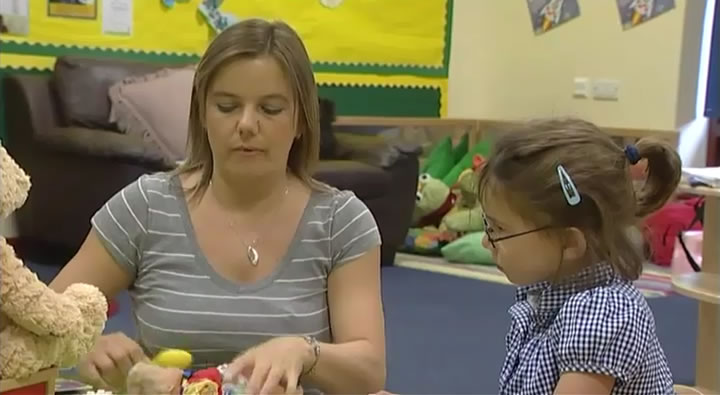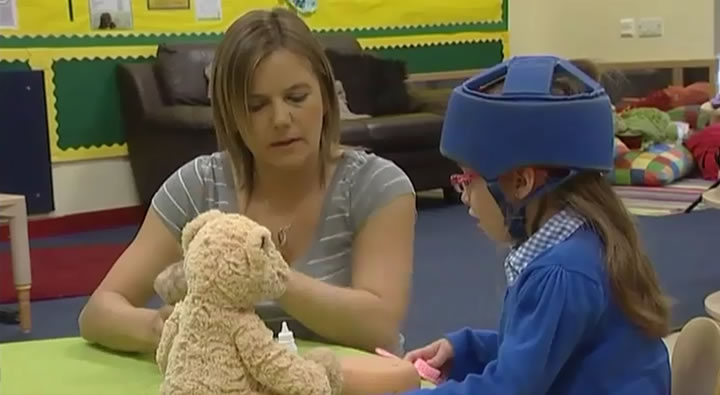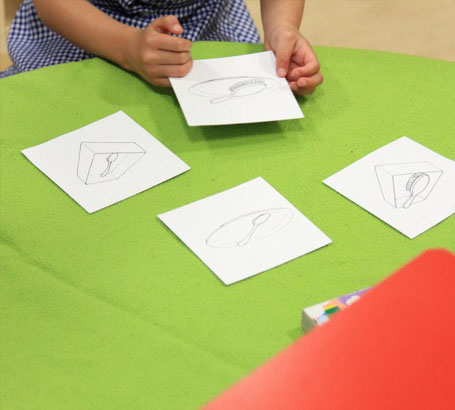
The Derbyshire Language Scheme has long been used with pupils with severe learning difficulties. This is just one of a
variety of language programmes for developing pupils’ use and understanding of spoken language.
The Derbyshire Language Scheme uses specific test situations to determine pupils' level of comprehension and expressive
language.
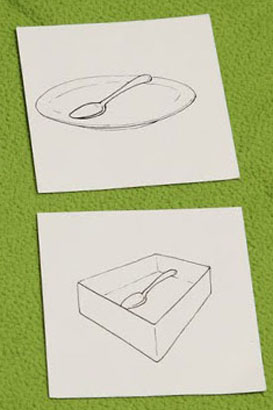
The Derbyshire Language Scheme (DLS) can be used with all pupils for whom
building vocabularies and teaching understanding and use of simple sentences, including basic grammar and syntax, are relevant
goals.
The DLS is split into three stages. The focus here is the Simple Sentence
stage which aims to teach pupils to understand and use a range of sentences of increasing complexity.
If you are not familiar with the DLS, have a look at this summary.
The DLS introduces the important concept of Information Carrying Words
(ICWs) as a gauge of the level of difficulty of instructions.
The level of difficulty is measured by counting the number of words which the pupil must understand
in order to respond to the command correctly. For instance, the pupil has to respond to one ICW in the command ‘Wash the doll’ when there is a flannel, a doll and teddy with which
to play. The pupil has to respond to the word ‘doll’. It is assumed that ‘wash’ has already been
learned and it is evident what the child has to do from the presence of the flannel.
Levels 1 to 4 of the DLS are determined by the number of ICWs that appear in commands or descriptions for the recommended activities at each level.
Read the following document for a description of the assessment procedures.
comprehension (1)
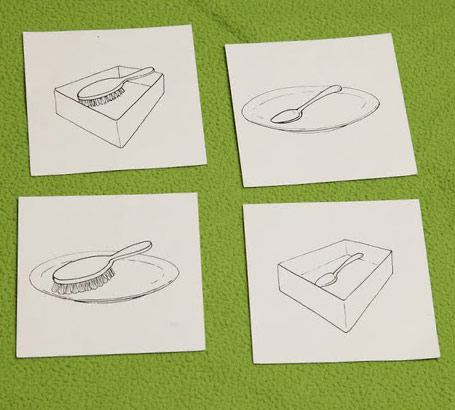
The DLS complete package includes a Detailed Test of Comprehension. However,
you may wish to consider how you would engineer some simple test situations.
Look at these pictures. Suggest a structure that they can be used to assess. What Level of the DLS might this be?
In the test depicted on the previous page, the child is instructed to show or select a particular picture, eg 'Where's
the spoon on the plate?' There are two objects to choose between and two places. This particular request contains two ICWs, 'spoon' and 'plate', and is at the two word comprehension level. Note that
understanding of the preposition 'on' is not being tested. The objects are either on the plate or in the box. There would
have to be additional pictures to test understanding at the three word level.
Use of pictures is always somewhat difficult. At the three and four word levels in particular it is easier to use objects.
This video shows how a teaching assistant uses simple, objective tests to assess a child’s knowledge of structures
at the two word level. What are the key skills and strategies of this teaching assistant? Can you see this testing being
done easily in the context of a regular teaching activity?
Note how the assessment materials are presented. Do you think the assessments were carried out properly? After you
have watched the video, read the commentary.
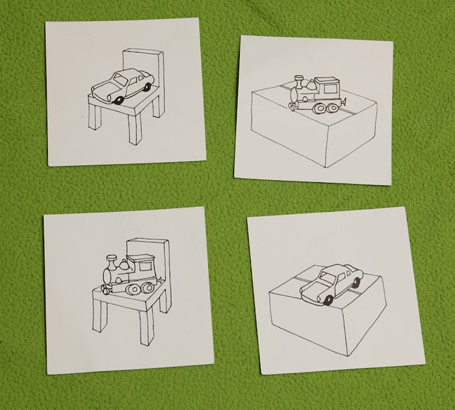
In the video on the previous page the teaching assistant used these four pictures with Zoe to assess object and place
at the two word level.
This is a progression from using actual objects. Many children require lots of learning experiences to associate pictures with actual objects, particularly line drawings of miniatures like these.
In this video a teaching assistant tries to assess another child's knowledge of structures at the two word level.
Again, can you see this testing being done easily in the context of a regular teaching activity? Note how the assessment
materials are presented. How do you think you would do these assessments with older children in ways that are age-appropriate?
After you have watched the video, read the commentary.
The teacher's grasp of the concept of the information carrying word
is essential. The level of difficulty of a request or instruction is measured by counting the number of words which
the pupil must understand in order to respond correctly. Judging whether words in a statement or request are ICWs depends on an analysis of the information available to the child from the context
in which the adult is speaking.
Consider why this concept is so essential in the special context of teaching pupils with complex needs. Make a list
of the reasons.
